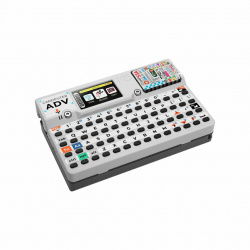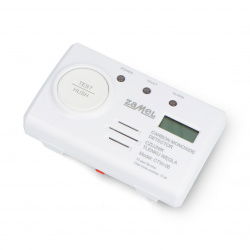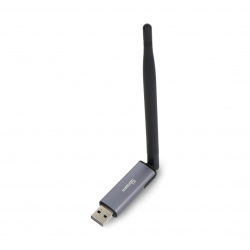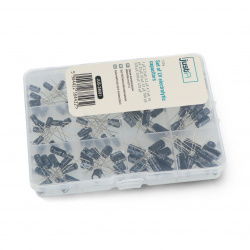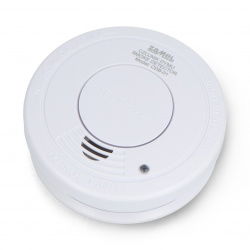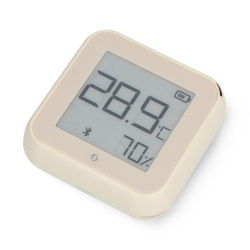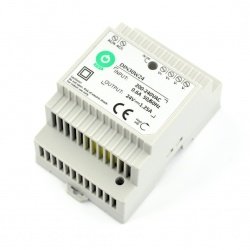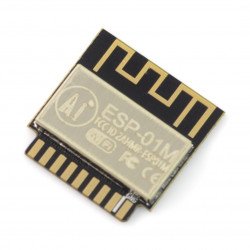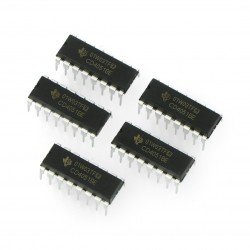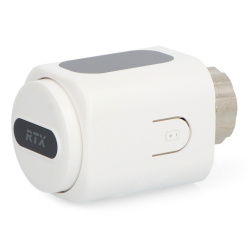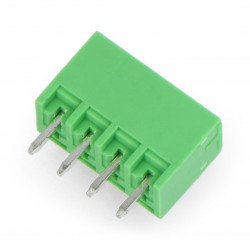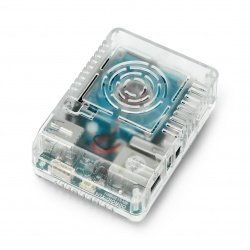Internet of Things is a symbol of modern electronics. Possibility of connecting various devices to remote servers, data clouds and even to each other creates a revolution based on smart, autonomous systems in quite different fields of our life. Flexible building automation, environmental monitoring, wearable medical devices or intelligent wehicles are only a few examples of IoT use cases. Thanks to broad range of modules and development platforms available on the market you can easily and fast check your design idea. One of the most interesting product families in this area is a series of Particle IoT modules. They contain powerful ARM Cortex-Mx CPU, a built-in wireless module and all essential stuff (power supply, LED indicators and so on) allowing you to run your program almost immediately, without effort needed to design and develop custom electronics including microcontroller, RF transceiver and at least basic peripherals. The great advantage of Particle IoT modules is a broad offer of compatible modules and accessories.
- Page
- View all
- 3D print
- Minicomputers
- Electronics
- Sensors
- Robots & mechanics
- Tools & Power Supplies
- Education
- Smart Home
- Others
- 3D PRINTING
- View all
- 3D printers
- Filaments
- Filament dryers
- 3D scanners
- Creative kits for 3D projects
- Accessories for 3D printers
- Components for 3D printers construction
- 3D Pens
- CNC
- MINICOMPUTERS
- View all
- Raspberry Pi
- Arduino
- Nvidia
- Flipper Zero
- XIAO
- Odroid
- BBC micro:bit
- Other minicomputers
- PLC drivers
- M5Stack
- ESP32
- ELECTRONICS
- View all
- Computer accessories
- Automobile accessories
- Cooling
- Diodes
- Sound and acoustics
- Mounting components
- Passive elements
- Wearables (e-textiles, smart clothes)
- Cameras
- Consoles
- Memory cards & disks
- Communication
- Converters
- Electronics courses
- Microcontrollers
- Animal repellers
- LED lighting
- Programmers
- Relays
- Voltage regulators
- Artificial intelligence
- Motor drivers and servos
- Integrated circuits
- Displays and screens
- More...
- SENSORS
- View all
- Resistance sensors
- Inductive sensors
- Alarm sensors
- 9DoF IMU sensors
- Piezoelectric sensors
- Oxygen sensors
- Pressure sensors
- Twilight sensors
- Door sensors
- Hall effect sensors
- RPM sensors
- Gas sensors
- Optical sensors
- Tilt sensors
- Accelerometers
- Air quality sensors
- Sound sensors
- Gesture sensors
- Inductive contactless sensors
- Grove modules
- Gravity modules
- Limit switches
- Sensors of light and color
- Magnetic sensors
- Medical sensors
- Pressure sensors
- Sensors odbiciowe
- Distance sensors
- Weather sensors
- Liquid level sensors
- Current sensors
- Flow sensors
- Motion sensors
- Temperature sensors
- PT100 temperature probes
- Humidity sensors
- Fingerprint readers
- Encoders
- Photoresistors
- Phototransistors
- IR receivers
- Magnetometers
- Gyros
- Sensor sets
- More...
- TOOLS AND POWER SUPPLIES
- View all
- Tools
- Soldering
- Power supply
- Oscilloscopes
- Measuring instruments & devices
New products
- New
Promotion products
Particle IoT
See also
Particle Photon – powerful IoT module in affordable price
Great example of Particle IoT modules is a minicomputer called Particle Photon. It’s a tiny PCB (only 80 x 60 x 16,5 mm dimension, 10 g weight) containing all of the essential functionality you need to run a wide range of embedded designs. The central part of this module is P0 WiFi module based on STM32F205 ARM Cortex-M3 microcontroller (1 MB of Flash memory and 128 kB of RAM) integrated with Cypress BCM43363 wireless chip) in form of tiny, surface mount SoM factory soldered on the Particle Photon printed circuit board. The WiFi transceiver supports wide range of IEEE 802.11 protocols (b/g/n) and security features (WEP, WAPI, WPA, WPA2-PSK). It can work with built-in SMT antenna or with an external antenna connected via u.FL coaxial connector. Both of the longer PCB edges are populated with 2.54-pitch pinheaders, so the Particle Photon can be seamlessly used with regular solderless breadboard. On the module’s board you can also find setup button, reset button and RGB LED. The module can be connected to your computer using micro USB port.
Quick start IoT development with Particle Argon KIT
Another interesting product from Particle IoT offer is Particle Argon KIT. It includes tiny, but powerful wireless module, a small solderless breadboard for rapid prototyping of custom circuitry as well as an external antenna with u.FL connector, two resistors, one LED, one photodiode and a compatible micro USB – USB A cable. The central part of the Argon board is highly-integrated SoM containing two different chips: nRF52840 and ESP32-D0WD. First of them is a combination of Bluetooth 5 transceiver, ARM TrustZone CryptoCell-310m cryptographic module and a powerful ARM Cortex M4, 32-bit floating-point MCU running at up to 64 MHz. The MCU has 1 MB of Flash memory and 256 kB of RAM and supports DSP instruction set. The second chip – ESP32-D0WD – is a 4 MB WiFi module supporting IEEE 802.11b/g/n protocols and reaching up to 150 Mb/s data rate. You can easily connect the Particle Photon module to your external hardware using two 2,54-pitch headers allowing you to access a wide range of internal peripherals (incl. ADC, PWM channels, I2C, USART and SPI serial interfaces) as well as regular GPIOs. Great advantage of the Particle Photon module is a built-in 3.7 V LiPo cell charger, which allows you to build battery-operated devices without external power supply circuits.
Wide offer of accessories and development boards
In our store you can also find a bunch of great base boards that you can use as an affordable development platform for any of Particle IoT modules. For example you can benefit from OLED Shield for Photon Micro (SparkFun DEV-13628) equipped with 0,66-inch 64 x 48 px monochromatic OLED display. If you are an Arduino platform fan you should obviously check Red Board Photon – and Arduino Uno-inspired board with build-in WiFi P1 Particle module. For more sophisticated applications you can use a development board for Particle M.2 modules with built-on Ethernet interface, microSD slot and a wide range of expansion connectors and switches.






























































































































































































































































































































